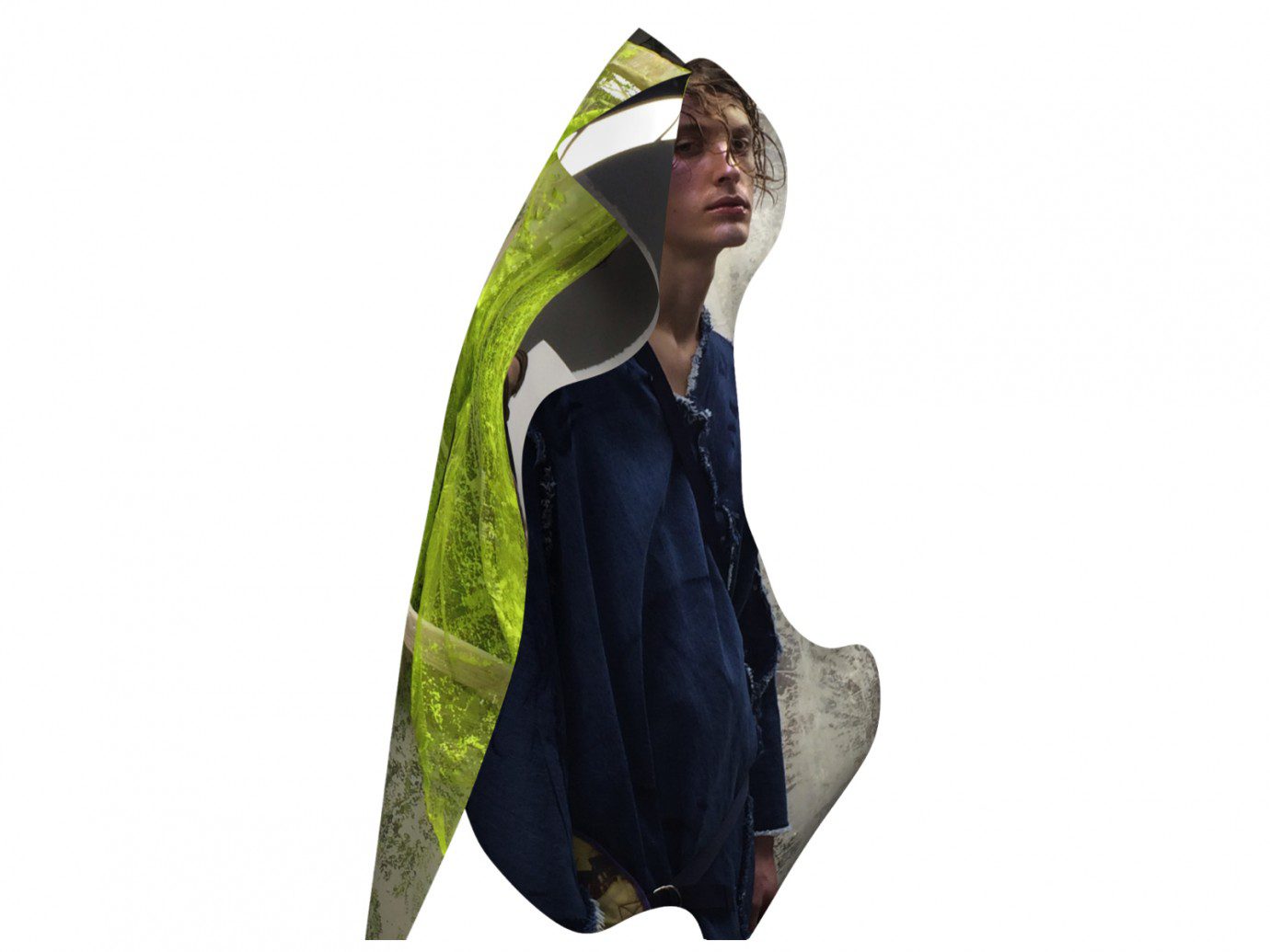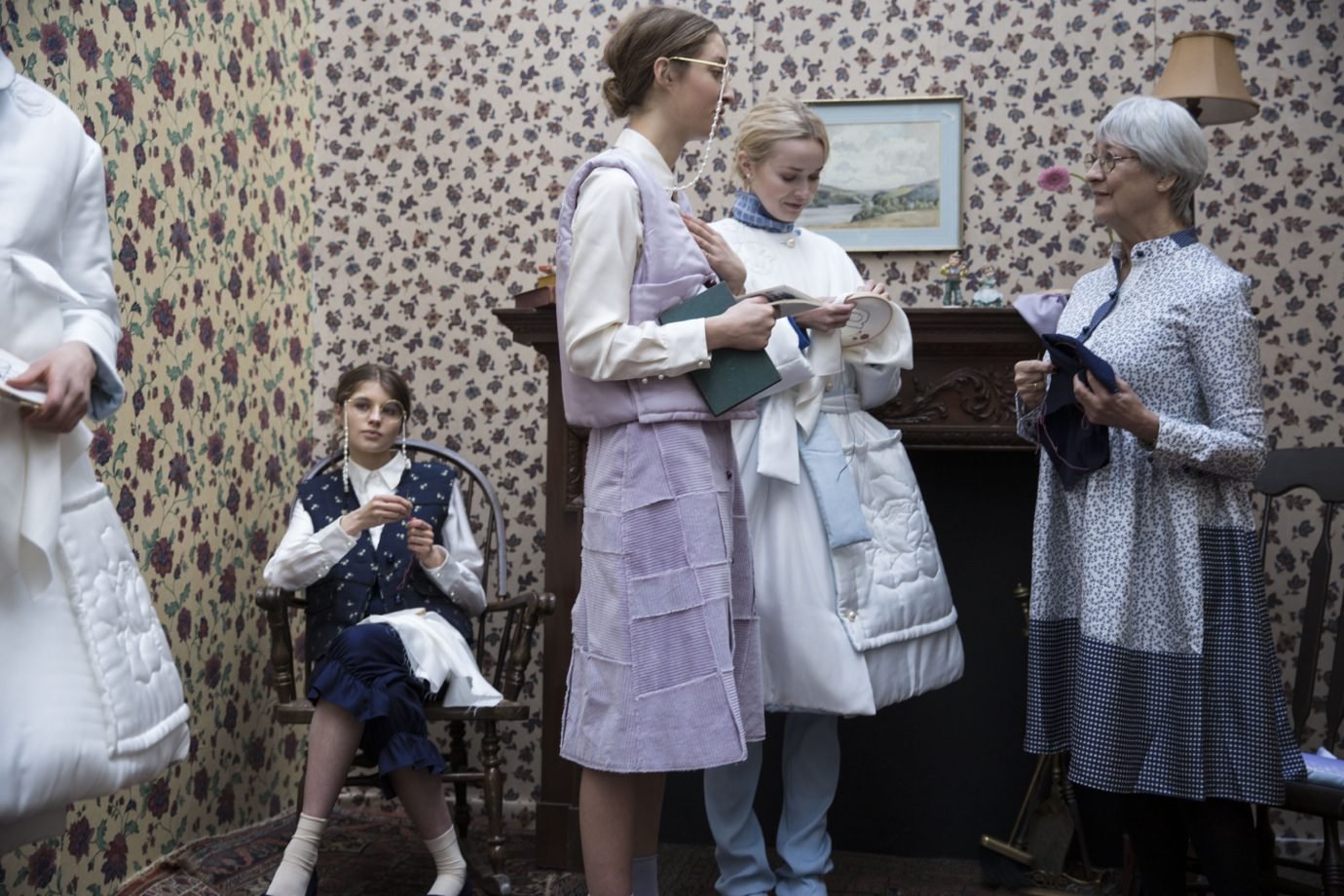Before first moving to London, Naranjo was used to people around him being more laidback. “In London people walk so fast,” he says. “Spain is another way of living. It’s much more chill.” Which is exactly what Naranjo’s year has not been. Following an encouraging reaction to his Autumn/Winter 2019 presentation in Madrid, he was added to the London Fashion Week schedule and had just one month to prepare for his first show. “I really wanted to come back and show in London because I studied at Central Saint Martins, so it was part of my creative life,” the designer explains. “As a young designer in London, you are in a sea of young designers, as it’s a city built for young people and new things. I love all the energy that fashion brings into the city, so I wanted to continue in London. In the end, all the effort paid off. I think it was a good starting point for my brand.”
Ernesto Naranjo’s playfully pragmatic ode to his Spanish heritage
Meet the Spanish designer hopping between London, Paris and Madrid a year on from graduating from CSM
“It’s not just about dancing and beaches and flamenco,” says Ernesto Naranjo, who is wary of the stereotypes associated with his Spanish roots. Eschewing these clichés, his first London Fashion Week collection since starting his own brand was inspired by strong women, surrealism and southern Spain’s slower pace of life.
“We have to treat fashion the same as we treat other careers. In the end, you’re working and creating a product — that’s it. You’re not doing something that’s out of this world. It is beautiful and exciting, but it’s the same as any career.”
Perhaps it’s his Spanish sensibility, but despite only having one month to prepare for Fashion Week, Naranjo kept a cool head. He admits it was tough, but the image of a sleepless, overworked, over-stressed designer couldn’t be further from the truth. Naranjo has never done an all-nighter, neither as a student nor in the run up to London Fashion Week and he is critical of the fashion industry’s glamorisation of overwork. He says that, “We have to treat fashion the same as we treat other careers. In the end, you’re working and creating a product — that’s it. You’re not doing something that’s out of this world. It is beautiful and exciting, but it’s the same as any career. You are just working to create something.”
Viewing fashion as a business, first and foremost, is at the core of Naranjo’s approach. He credits his father, who runs a hardware store, for giving him such a commercially minded vision. It is, however, the women in his family, not the men, who inspire him the most.
“I grew up seeing my grandmother, my mother and my two aunts playing with fashion,” he says. “They would break apart cups and plates then make jewellery with them. I thought it was ironic that women living in a really small village in the south of Spain played with fashion like that when in cities like London or Paris you have to follow the trends at some point.”
“Outside of Spain I was always pointed out as a Spanish designer, despite having spent all the years of my education in London.”
His most recent offering for SS20 was another confident step in the designer’s development, with his work’s signature tassels and geometries of adapted to sculptural silhouettes in pastel hues. This season also saw Naranjo return to Madrid Fashion Week. “Outside of Spain I was always pointed out as a Spanish designer, despite having spent all the years of my education in London. That is why I have decided to show in Spain first, and then go to present on other platforms from here,” he says. But his choice is also guided by a strategic element: “Being outside of a big fashion capital allows you the perspective to look at things differently. Madrid brings international press and buyers that are more open to seeing new designers in a place where there isn’t typically as much on offer. In London or Paris, you have to compete with so many others and it is difficult to attract attention.”
Nevertheless, Naranjo remains intent on having a foothold in all of the cities he mentions, describes life as a designer “like being in the circus – moving around the world with a suitcase, showing your stuff to other people.” Spain may be at the heart of his work, but the designer takes influences from wherever he goes. All the same, aware as he is that Spain is not known for being a fashion capital, it’s a perception he’s looking to change. “I produce the collections here in Spain because I thought that being Spanish and not doing so would be wrong. I decided to go to Spain, find artisans and craft machines, find old people that know how to do things and try and take their knowledge and put that into my collection.”
Naranjo’s long-term plan is to revive the workshops of traditional artisans, creating more jobs for young people in the process. “I want to create excitement for craftsmanship, slow fashion and sustainability,” he explains. “In Spain, there is a lot of craftsmanship, but it’s not supported. All the techniques are disappearing because no one wants to learn them. You see people struggling to find work and opportunities and it’s sad because it’s a joyful country and we love life. It’s where I take all my inspiration from. The people surrounding me really inspired me to try to change things and to help them.”
A noble ambition, but with his realistic outlook and strong sense of national identity, perhaps it lies within reach. Naranjo may admire the slower pace of Spanish life, but he shows no signs of slowing down any time soon.























